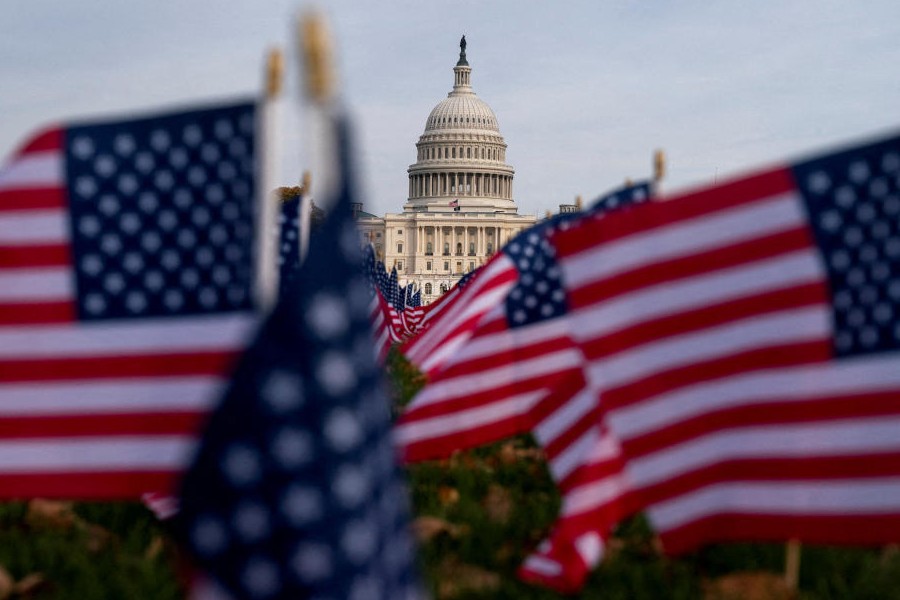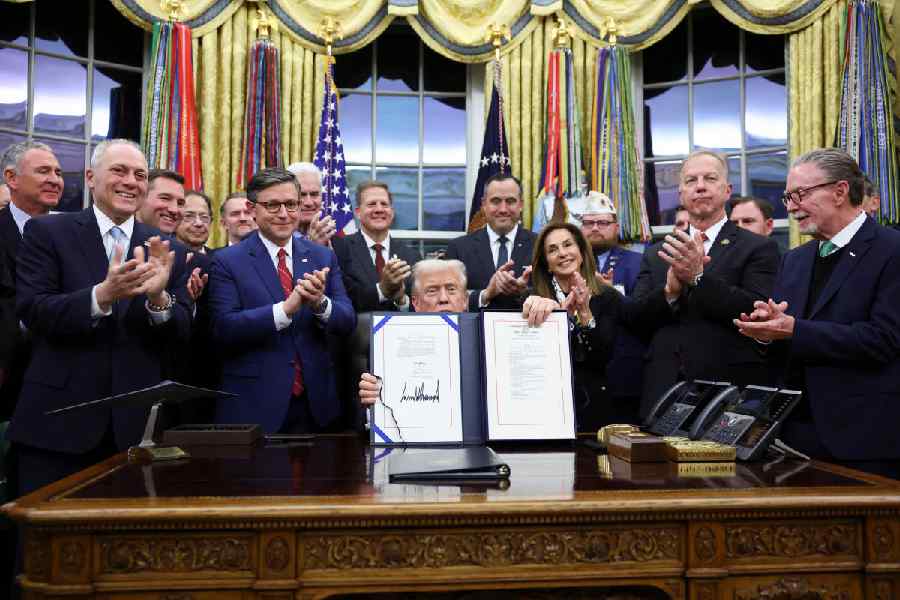The US government is due to lumber back to life on Thursday after the longest shutdown in US history snarled air traffic, cut food assistance to low-income Americans and forced more than 1 million workers to go unpaid for more than a month.
But the deep political divisions that caused the 43-day shutdown in the first place remain unresolved.
The funding package contains few guardrails to restrain Republican President Donald Trump from withholding spending, in an administration that has regularly challenged Congress' constitutional authority over money.
And it does not address the soon-to-expire health subsidies that led Senate Democrats to begin the shutdown in the first place.
The shutdown also exposed divides within the Democratic Party between its liberal base, which has demanded its leaders do whatever necessary to rein in Trump, and moderates who feel their options are limited so long as Republicans hold majorities in both chambers of Congress.
Senate Democratic Leader Chuck Schumer is facing calls to step down, even though he voted against the deal.
Federal workers, who had toiled without pay through the shutdown, will begin to receive back pay on Saturday with all payments due to be completed by Wednesday, the White House said.
Agencies that fired employees during the shutdown should rescind the dismissals within five days, the federal workforce office said.
Americans blame Republicans and democrats almost equally
Neither party appears to have emerged as a clear winner. A Reuters/Ipsos poll released on Wednesday found that 50 per cent of Americans blamed Republicans for the shutdown while 47 per cent blamed Democrats.
The return to normality could be short-lived, as the deal only funds the government until January 30, raising the prospect of another shutdown early next year.
The shutdown put Democrats in an unusual position, as Republicans have more frequently been the side that forced funding expirations over the last few decades.
This shutdown also stood out for what was largely absent: debate over the $38 trillion national debt, which Congress for now leaves on a path to keep growing by about $1.8 trillion per year.
Senate Democrats said the pain across the economy, including interruptions in federal benefits and missed paychecks for federal workers, was worth it to call attention to the coming surge in health insurance prices for some 24 million Americans.
"The healthcare of the American people is a fight worth having, and I'm proud that Democrats held together for this long to fight this battle," Representative Hank Johnson of Georgia told Reuters. "The American people are more aware of the high stakes in the fight that we're on ... They understand the precariousness of the situation, and that's why they want us to fight."
Democrats secured no guarantees on health subsidies, only a promise that the Republican-controlled Senate will hold a vote on the matter, with no assurances that it would pass or that the House would even vote on it.
But they argued that they managed to elevate the issue at a time when polls show Americans are concerned about the rising cost of living, and Republicans could face political blowback if they do not act to prevent insurance costs from spiking.
The subsidies disproportionately benefit residents of Republican-controlled states. Republicans, meanwhile, found themselves making arguments often voiced by Democrats during shutdowns: that the damage of the disruptions was not worth it.
"We ought to be legally prohibited from ever shutting down the government," Representative Brian Fitzpatrick, a Republican moderate, told Reuters. "This is just absolutely insane, insane that we're now using government shutdowns as leverage for policy. That can never happen, and it's a terrible precedent to set, obviously."
Flights and food benefits to resume
The nation's air travel system has begun returning to normal, after thousands of flight cancellations brought on by high absentee rates among the nation's air traffic controllers.
And 42 million Americans will no longer have to worry whether the SNAP subsidies that help them pay for groceries will run out. A USDA spokesperson said most states would receive funds for full SNAP benefits within 24 hours of the government reopening.
The shutdown forced hundreds of thousands of federal employees to keep working without pay, while others deemed nonessential were ordered not to work. They are due back pay under a 2019 law, though Trump's White House has threatened to withhold pay for some.
Trump also tried to fire thousands of federal workers during the shutdown as he followed through on a threat to target domestic programs favored by Democrats.
The deal that ends the shutdown allows those workers to keep their jobs, and pauses Trump's broader downsizing campaign until the end of January. Trump is on track to reduce the 2.2 million-strong civil service by 300,000 workers by the end of the year.
The shutdown has prevented the government from releasing an array of economic data, forcing investors and the Federal Reserve to operate in the dark as they tried to assess the state of the world's largest economy.
It also spooked consumers ahead of the year-end holiday shopping season. The nonpartisan Congressional Budget Office estimated it would delay roughly $50 billion in spending and lower US GDP by 1.5 percentage points.
The CBO said the economy will largely bounce back when the shutdown ends, though up to $14 billion in lost activity will not be recovered.












